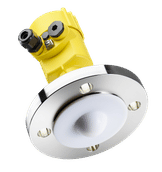Quantum Sensors for High-Precision Magnetometry of Superconductors
Advertisement
Scientists at the Swiss Nanoscience Institute and the Department of Physics at the University of Basel have developed a new method that has enabled them to image magnetic fields on the nanometer scale at temperatures close to absolute zero for the first time. They used spins in special diamonds as quantum sensors in a new kind of microscope to generate images of magnetic fields in superconductors with unrivalled precision. In this way the researchers were able to perform measurements that permit new insights in solid state physics.
Researchers in the group led by the Georg-H.-Endress-Professor Patrick Maletinsky have been conducting research into so-called nitrogen-vacancy centers (NV centers) in diamonds for several years in order to use them as high-precision sensors. The NV centers are natural defects in the diamond crystal lattice. The electrons contained in the NVs can be excited and manipulated with light, and react sensitively to electrical and magnetic fields they are exposed to. It is the spin of these electrons that changes depending on the environment and that can be recorded using various measurement methods.
Maletinsky and his team have managed to place single NV spins at the tips of atomic force microscopes to perform nanoscale magnetic field imaging. So far, such analyses have always been conducted at room temperature. However, numerous fields of application require operation at temperatures close to absolute zero. Superconducting materials, for example, only develop their special properties at very low temperatures around -200°C. They then conduct electric currents without loss and can develop exotic magnetic properties with the formation of so-called vortices.
At temperatures close to absolute zero for the first time
In their paper, the scientists successfully used their new microscope under cryogenic conditions at temperatures of about 4 Kelvin (~ -269 °C) for the first time. They were able to image magnetic stray fields of vortices in a high-temperature superconductor with a hitherto unrivalled precision.
The resulting spatial resolution of 10 nanometers is one to two magnitudes better than that obtained using alternative methods. This permits for the first time an unambiguous and quantitative analysis of important material parameters, such as the magnetic penetration depths of the superconducting probe – one of the fundamental characteristics of a superconductor.
“Our findings are of relevance not only for quantum sensor technology and superconductivity,” says Patrick Maletinsky, commenting on the paper, “on the long run they will also have an influence on solid state physics and, with further improvements in sensitivity, they may even enable applications in biology.”
Original publication
Other news from the department science
These products might interest you
Most read news
More news from our other portals
See the theme worlds for related content
Topic world Sensor technology
Sensor technology has revolutionized the chemical industry by providing accurate, timely and reliable data across a wide range of processes. From monitoring critical parameters in production lines to early detection of potential malfunctions or hazards, sensors are the silent sentinels that ensure quality, efficiency and safety.

Topic world Sensor technology
Sensor technology has revolutionized the chemical industry by providing accurate, timely and reliable data across a wide range of processes. From monitoring critical parameters in production lines to early detection of potential malfunctions or hazards, sensors are the silent sentinels that ensure quality, efficiency and safety.

































































